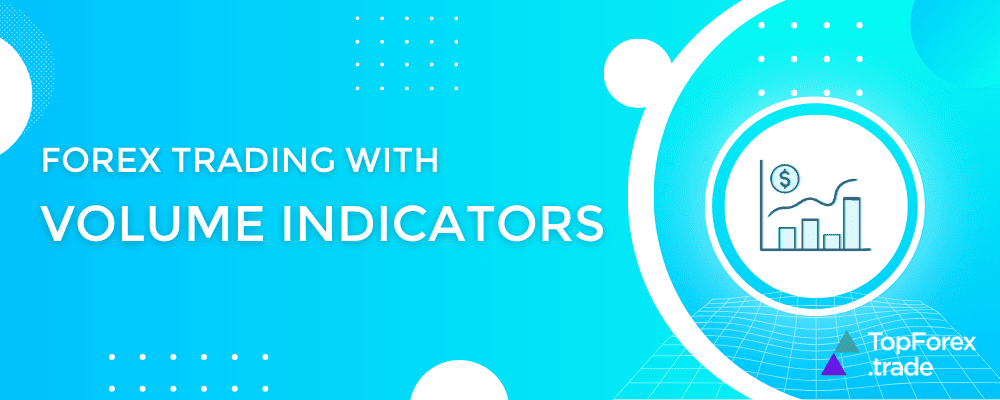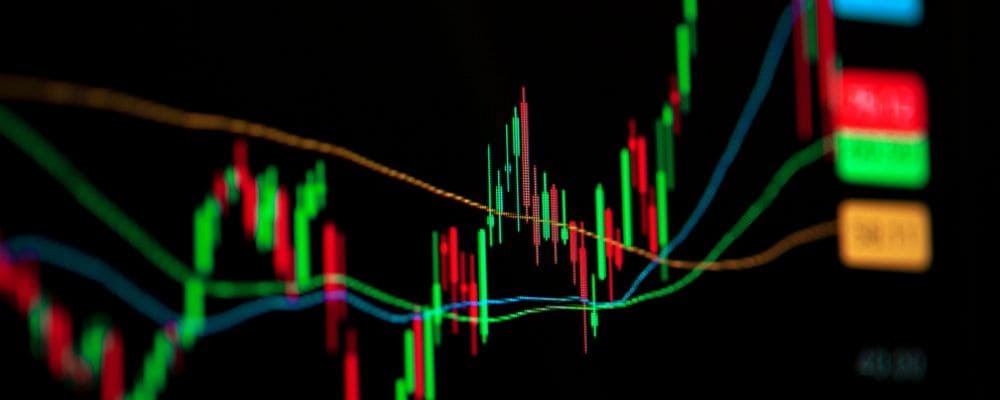Forex trading with volume indicators: best strategies and common signals

Forex trading involves the buying and selling of currencies in a highly liquid, decentralized market. Traders rely on various Technical analysis indicators to make informed decisions, and among the most valuable are volume indicators. While forex is technically an over-the-counter (OTC) market without centralized data on trading volumes, brokers often provide tick volumes as a proxy for the number of price changes in a given period.
Volume is crucial because it reflects the strength and intensity of market participation. A price movement accompanied by higher volume is often seen as more significant, indicating genuine interest behind the move. On the other hand, low-volume price changes may suggest market hesitation or a potential reversal.
Volume indicators are tools used by traders to analyze volume dynamics. They help confirm trends, identify breakouts, and spot potential reversals by measuring the amount of trading activity in a market. Understanding how to read and apply these indicators can give traders deeper insight into market sentiment and improve the timing of their trades.
Why volume is important in the Forex market

Volume plays a pivotal role in understanding market activity because it shows the level of interest or participation in a given price movement. In the forex market, where currencies are traded in high volumes, volume indicators can help traders gauge the strength or weakness of a trend and make more informed trading decisions.
- Reflecting market activity:
In Forex, volume is often represented by tick volume, which counts the number of price changes within a specific time period. While not an exact measure of actual trading volume like in stock markets, it still serves as a useful proxy for market activity. When tick volume is high, it indicates active participation from market players, while low tick volume signals reduced interest.
- Confirming trends:
Volume is especially helpful in confirming the strength of a trend. For instance, in an uptrend, rising volume suggests strong buying interest, which supports the sustainability of the price increase. Conversely, in a downtrend, increasing volume indicates that sellers are more dominant, giving traders confidence that the price decline will likely continue.
Without sufficient volume, price movements may be less reliable, as they can occur due to a few participants rather than a larger consensus. This makes volume a key factor in deciding whether to enter or exit trades during trends.
- Spotting potential reversals:
Volume indicators can also be used to detect potential market reversals. When price continues to rise but volume starts to decline, it may suggest that the trend is losing momentum, signaling an upcoming reversal. Similarly, if the price falls but the volume decreases, it could indicate that selling pressure is weakening, offering a potential buying opportunity.
Common volume indicators in Forex trading

Volume indicators offer traders insight into the strength of market trends and potential reversals. Below are three widely used volume indicators in forex trading: On-Balance Volume (OBV), Volume Weighted Average Price (VWAP), and the Money Flow Index (MFI). Each serves a unique purpose and can be applied in different trading strategies.
On-Balance Volume (OBV)
The On-Balance Volume (OBV) indicator is a simple but powerful tool that tracks cumulative volume to assess buying and selling pressure. It works by adding the volume on up days and subtracting the volume on down days. This running total is then plotted as a line graph alongside price.
OBV helps traders confirm trends. When the OBV line is moving in the same direction as the price, it indicates that the trend has support from volume.
For example:
- If prices are rising and OBV is also increasing, it suggests strong buying momentum, making the uptrend more likely to continue.
- Conversely, if the price is rising but OBV is falling, it could signal a weakening trend, possibly indicating a reversal or correction.
OBV can also be used to detect divergences. If the price makes new highs or lows but OBV doesn’t follow suit, this divergence might hint at an upcoming reversal.
Volume Weighted Average Price (VWAP)
The Volume Weighted Average Price (VWAP) is a technical indicator that provides the average price of a currency pair, adjusted for the volume traded at each price level. VWAP is commonly used in other markets, but it can still offer value in forex by helping traders determine whether the current price is above or below its volume-adjusted average.
In Forex, VWAP can be used as a dynamic support or resistance level. If the price is above the VWAP, it’s a sign that the currency pair is in an upward trend, and traders might look for buying opportunities. If the price is below the VWAP, it could indicate a downtrend, and traders might look for shorting opportunities.
VWAP can also help identify market sentiment. Traders often use it to assess whether they are entering a trade at a favorable price relative to market volume, aiming to buy below or sell above VWAP for better entry and exit points.
Money Flow Index (MFI)
The Money Flow Index (MFI) is a momentum indicator that combines price and volume to gauge the flow of money into and out of a currency pair. It ranges from 0 to 100 and is similar to the Relative Strength Index (RSI) but with the added benefit of factoring in volume. MFI is often referred to as the “volume-weighted RSI.”
MFI is commonly used to identify overbought and oversold conditions:
- A reading above 80 suggests the currency pair may be overbought, and a reversal to the downside could be imminent.
- A reading below 20 indicates that the currency pair may be oversold, signaling a potential buying opportunity.
MFI can also be used to spot divergences between price and money flow. For example, if the price continues to rise but MFI starts to fall, it may indicate that the buying momentum is weakening and that a reversal might be on the horizon.
How to apply volume indicators to Forex strategies

Volume indicators are powerful tools that can enhance your forex trading strategies. They provide insights into market sentiment and the strength of price movements. Here’s how volume indicators can be applied effectively in forex trading strategies:
One of the most important uses of volume indicators is to confirm the strength of a trend. When price movement is supported by strong volume, it indicates that there’s significant participation in the market, making the trend more reliable.
- Uptrend: In an uptrend, rising prices should be accompanied by increasing volume. This suggests that the buying pressure is strong, and the trend is likely to continue.
- Downtrend: In a downtrend, falling prices with increasing volume indicate strong selling pressure, supporting the continuation of the downward movement.
If price moves in a particular direction but volume is declining, it may be a warning sign that the trend is losing momentum and could be nearing a reversal. For example, if a currency pair’s price is rising but volume is decreasing, it suggests that fewer buyers are supporting the price increase, making the uptrend less likely to sustain.
Spotting divergence between volume and price
The divergence between volume and price is a powerful signal that can alert traders to potential reversals. When price and volume move in opposite directions, it often indicates that the current trend is weakening.
A bullish divergence occurs when price is making new lows, but the volume indicator is showing higher lows. This suggests that the selling pressure is decreasing, even though the price continues to fall, indicating a potential reversal to the upside.
A bearish divergence occurs when the price makes new highs, but volume shows lower highs. This indicates that the buying pressure is weakening, signaling that the uptrend may be coming to an end and a downside reversal could be on the horizon.
By paying attention to divergence, traders can spot turning points in the market before they are evident in price action alone.
How volume can signal a breakout
Volume is also a key indicator for detecting breakouts from consolidation phases, such as ranges or chart patterns like triangles and rectangles. Breakouts occur when price moves out of a defined range, and volume plays a crucial role in confirming whether the breakout is likely to be sustained.
- Volume spike during breakout: A significant increase in volume during a breakout suggests strong conviction behind the move. This can help traders feel confident that the price will continue in the breakout direction. For example, if a currency pair breaks through a resistance level with high volume, it’s a strong signal that the bulls are in control and the upward movement will continue.
- Low volume breakout: If a breakout occurs on low volume, it may be a false breakout. Low volume suggests that there isn’t enough market participation to sustain the move, and the price might soon return to its previous range.
By combining volume analysis with price action during breakouts, traders can increase the likelihood of entering successful trades and avoid false signals.
Combining volume with other trading indicators

While volume indicators are valuable on their own, combining them with other technical tools like Moving Averages, the Relative Strength Index (RSI), or the Moving Average Convergence Divergence (MACD) can offer even more robust trading signals. This multi-indicator approach helps confirm trends, refine entry and exit points, and reduce the risk of false signals.
Pairing volume with Moving Averages
MAs are popular trend-following indicators that smooth out price action to reveal the underlying trend direction. When paired with volume indicators, they can provide clearer insights into the strength of a trend.
— Example:
If a currency pair is above a rising 50-period Moving Average and volume is increasing, it confirms that the uptrend is strong. However, if the price is above the MA but volume starts to decline, it could suggest that the uptrend is weakening and a reversal might occur soon.
— Crossover strategies:
Volume can also help confirm the validity of Moving Average crossovers. For instance, if a faster-moving average crosses above a slower-moving average (a bullish signal), an accompanying rise in volume strengthens the signal. Without volume confirmation, the crossover might lack conviction.
Pairing volume with RSI
The Relative Strength Index is a momentum oscillator that measures the speed and change of price movements, often used to identify overbought and oversold conditions. Combining RSI with volume indicators provides a more comprehensive view of market dynamics.
— Example:
If the RSI shows that a currency pair is overbought (above 70) and volume is also declining, it could indicate that the bullish momentum is fading and a price reversal is likely. Conversely, if RSI is in oversold territory (below 30) and volume starts to increase, it may signal strong buying interest and a potential trend reversal to the upside.
— Confirming divergence:
When RSI and volume both show divergence from price action, it strongly indicates that a reversal is likely. For instance, if the RSI is declining while price rises and volume also falls, this double confirmation of weakening momentum suggests the uptrend is unsustainable.
Pairing volume with MACD
The Moving Average Convergence Divergence (MACD) is another momentum indicator that tracks the relationship between two moving averages of a currency’s price. It’s particularly useful for identifying trend reversals and gauging market momentum. When combined with volume indicators, the accuracy of MACD signals can be significantly improved.
— Example:
If the MACD line crosses above the signal line (a bullish crossover) and this is accompanied by rising volume, it provides strong confirmation that the bullish trend is gaining momentum. On the other hand, if the MACD gives a buy signal but volume is low or falling, traders might want to exercise caution as the move may lack sufficient market participation to continue.
— Divergence with volume and MACD:
Like with other indicators, the divergence between the MACD and price, confirmed by volume, can serve as an early warning of a potential reversal. For instance, if the MACD is signaling bullish momentum but volume is falling, it may suggest that buying interest is fading, despite the MACD’s optimistic outlook.
Forex trading with volume indicators: Top trusted brokers

When it comes to applying volume indicators, choosing a reliable broker with excellent tools and features is crucial for maximizing your potential. Brokers like the ones reviewed below offer top-tier trading platforms that can help traders make more informed decisions based on volume analysis.
eToro: Social trading and volume insights
eToro is renowned for its user-friendly platform and Social trading features, which allow traders to follow and copy the strategies of experienced investors. This can be particularly beneficial for beginners who are still learning how to use volume indicators effectively. By observing how professional traders integrate volume analysis into their strategies, you can fast-track your learning curve.
Additionally, the broker offers comprehensive charting tools, including volume-based indicators, to help you identify market trends and breakouts with ease. Its transparent trading environment also means you can see the level of activity around popular currency pairs, giving you a better understanding of market sentiment.
XM: Advanced tools for volume analysis
XM, for traders who prefer more advanced charting capabilities, offers the powerful MetaTrader 4 (MT4) and MetaTrader 5 (MT5) platforms. These platforms are ideal for traders using volume indicators like On-Balance Volume (OBV), Money Flow Index (MFI), or VWAP in their trading strategies.
XM also provides tight spreads and fast execution, ensuring that your trades are executed efficiently when volume confirms a breakout or a trend reversal. The broker’s educational resources and webinars further help traders understand how to integrate volume analysis into their forex strategies.
AvaTrade: Comprehensive charting and educational resources
AvaTrade is another great broker for traders focused on volume analysis. AvaTrade offers access to both MetaTrader platforms and its proprietary AvaTradeGO, giving traders the flexibility to customize their trading environment and add volume indicators to their charts.
AvaTrade excels in offering a wide range of educational materials, from beginner guides to advanced tutorials on Technical analysis, including how to use volume indicators. This broker also provides competitive trading conditions with a strong emphasis on risk management, which is essential when trading based on volume signals.
Exness: High-quality trading conditions and flexibility
Exness is known for its low spreads, high liquidity, and flexibility in trade sizes, including micro and nano lots. This is particularly beneficial for traders who want to apply volume indicators to smaller positions to minimize risk. Whether you’re trading with On-Balance Volume (OBV) to confirm trends or using Money Flow Index (MFI) to spot reversals, Exness’s trading environment ensures precise execution.
Exness also offers an intuitive platform with easy-to-navigate charting tools, making it a great option for traders who want to apply volume analysis effectively. The broker’s support for automated trading strategies can also be combined with volume-based systems for more consistent trading performance.
By partnering with these brokers, traders can take full advantage of their demo accounts, sophisticated platforms, competitive trading conditions, and educational resources to apply volume indicators and improve their Forex trading strategies. Whether you are a beginner or an experienced trader, these brokers provide the right tools to help you harness the power of volume in the Forex market.
Related articles:
How to use Volume Indicators in Forex trading - FAQ